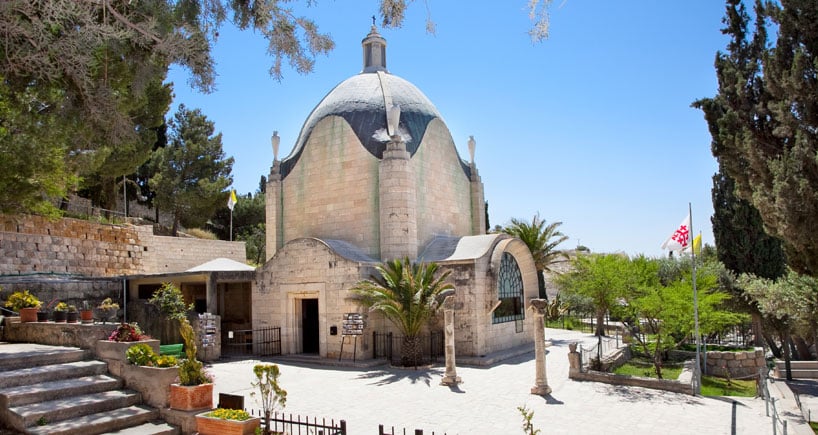“And when [Jesus] drew near and saw the city, he wept over it…” – Luke 19:41
Located halfway down the steep western slope of the Mount of Olives in Jerusalem, visitors will find the church of Dominus Flevit (“The Lord Wept” in Latin).
Like many structures in Jerusalem, the church was designed and built by the Italian architect Antonio Barluzzi in 1955. His specific vision for the teardrop-shaped church was to commemorate the moment when Jesus wept upon seeing Jerusalem and understanding the future destruction of the city and Second Temple in 70 AD.
This poignant moment in Scripture occurred during Jesus’ triumphal entry into Jerusalem on the first Palm Sunday, not on a warhorse, but on a donkey as prophesied in Jeremiah 9:9. The crowds threw their cloaks on the road in front of him and shouted, “Blessed is the king who comes in the name of the Lord!” They cried “Hosanna” which means “salvation” — unaware of the horrific fate to come in just a few decades.
Looking down on the city during the hustle and bustle of Passover preparations, Jesus describes a much different scene. He speaks of enemies which would “set up ramparts around you and surround you and hem you in on every side…crush you to the ground…and they will not leave within you one stone upon another; because you did not recognize the time of your visitation from God” (Luke 19:37-44).
Visitors to Dominus Flevit can take in magnificent panoramic views of Jerusalem and the Temple Mount from the promenade or through a large, arced window behind the altar of the church. The decorative wrought-iron bars depict a cup, a loaf, thorns, and a cross. There is also a mosaic of a hen gathering her chicks at the foot of the altar.
There are also mosaics from the ruins of a 5th century Byzantine monastery, richly decorated with pictures of fruit, flowers, and leaves.
A visit to Dominus Flevit offers a porthole through time, a view of Jerusalem through Jesus’ eyes. It is accessible by foot, taxi, or a private tour. Modest dress is strongly recommended.








